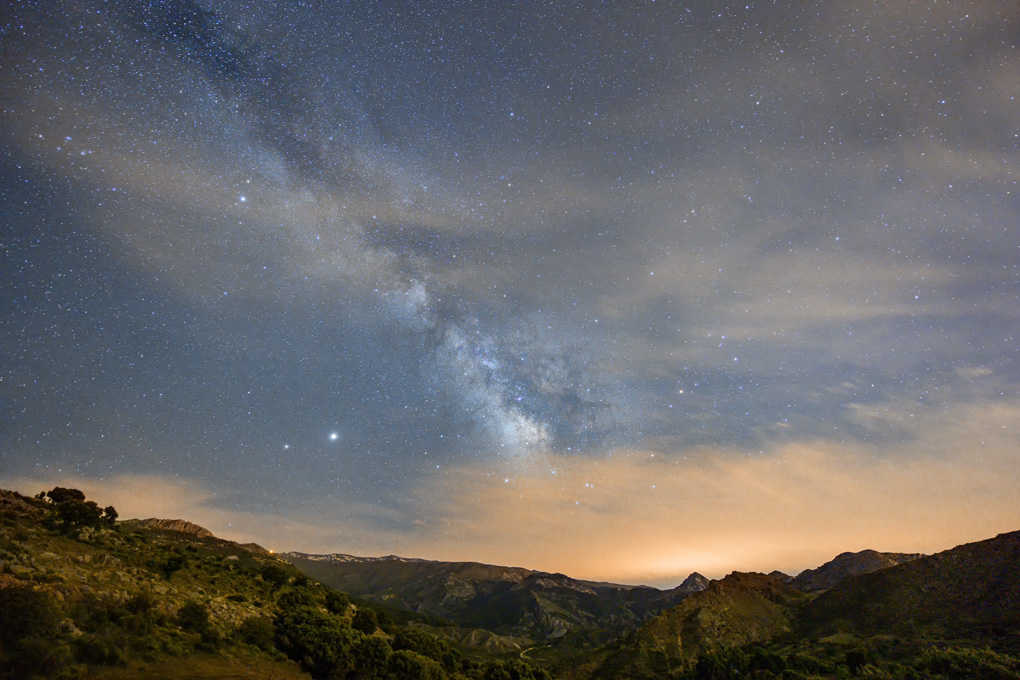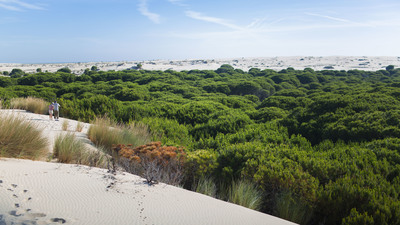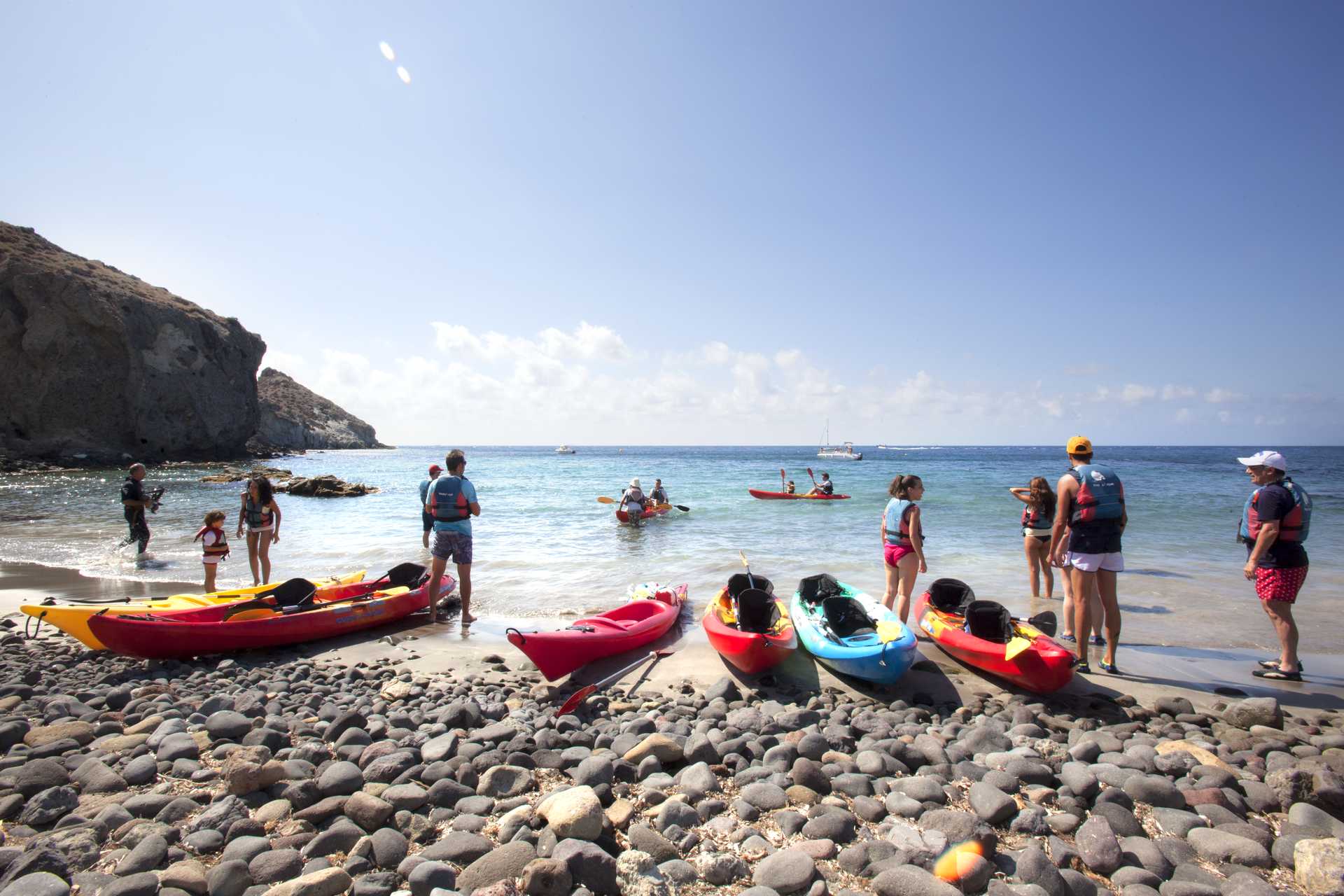
Useful information: Astrotourism
If you want an introduction to astronomy, we advise you to have a first experience guided by professionals or experts who will give us advice and help us take the first steps with guaranteed success, providing you with information, documents, instruments, optimal environmental conditions and the most suitable spot. It can be an activity organised by a specialised company, astronomy association, astronomical observatory, planetarium, etc.
Once you have made your first contact with our exciting universe, you will have to continue investigating and observing it to get to know it better. Astronomical observations can be:
- Daytime observations to study the sun.
- Nighttime observations to be able to look at celestial bodies through powerful professional telescopes, or see and enjoy the starry sky with the naked eye, with basic instruments, binoculars, portable telescopes, etc.
Depending on the type of observation that is carried out, some guidelines must be taken into account that will help us to safely optimise our stargazing outings.
Recommendations for Safe Daytime Observation
The first warning and recommendation is not to look at the sun with binoculars or telescopes, or directly without suitable protection, as it can cause irreversible eye damage.
Looking directly at the sun is dangerous because of its brightness (visible) and infrared and ultraviolet radiation, which our eyes do not perceive. The former are the rays that give us heat and the latter are the ones that get us tanned. We must always protect ourselves from all types of sunrays, whether they are visible or not. In order to safely observe the sun's activity, sunspots or the development of an eclipse, we must protect ourselves by using suitable, approved methods and, if possible, with express certification.
A simple method is to get a piece of A4 cardboard and frame a (inactinic) welder's filter of factor 14 and 15, certified with the EN 169 standard, which can be found in specialised shops in the town. These filters are designed to protect from ultraviolet and infrared light, as well as to dim visible light.
Another method is to use eclipse glasses. They must be approved and certified expressly for observation with the naked eye. They can usually be found in specialised stores such as astronomical instrument stores.
Even using safe protection, it is not advisable to look at the sun for long periods of time, and, above all, never use them in combination with optical instruments such as binoculars, telescopes or spyglasses.
Enjoy the greatest spectacle of nature by gazing at the best night sky in Andalusia
Plan your stargazing sessions. For this, you'll need to know the calendar of stargazing events during the year, the best time to view them and, depending on our interests, equipment, available time, location, previous experiences, etc. You should select the dates and objects or celestial bodies to be observed, in order to establish the order in a programme or schedule.
Every stargazing experience has its own routine, but here we are going to highlight the elements and aspects that are common to all of them and that will help you to get ready.
Check the weather forecast for the day or night you are observing the sky.
Plan the stargazing sequence of the different celestial bodies, stars or constellations... taking into account the day and night movement of the sky.
Prepare the materials that are you going to use:
- Atlases and star charts that are suitable for the objectives planned on that date and arrange them according to the sequence of use.
- Torch with an adjustable support and suitable brightness that doesn't dazzle while you use it. Red or green light is recommended.
- Check the optical instruments: telescope, binoculars, etc.
- Check your personal equipment: stool, mat, blanket, flask for hot drinks, biscuits or nuts, water, warm clothing and comfortable shoes, and if it is summer, insect repellent.
At the beginning of a stargazing session, write in your logbook the date, time, weather, phase of the moon and any unusual conditions. As you observe each star, write down its name, time, size, chart or charts, and the comparison stars used.
At the end of your stargazing sessions, make notes such as a full summary of the session in your logbook. Put away the charts used neatly so you can find them next time.
Galaxies, constellations, solar systems, shooting stars, planets, comets, satellites, eclipses, lunar phases, celestial objects, telescopes, star charts, black holes, brightness, darkness, sharpness, transparency, light pollution... These are terms and concepts that will start to become very familiar; it will be the slang that we will use in regular conversations with other astronomy enthusiasts.
Publications on Basic Astronomy and Links of Interest to specialised Websites
There are many interesting informative websites, specialising in content related to astronomy, where you will find information, advice, activities, events and more. Some of them are:
"100 Basic Astronomy Concepts": Edited by INTA (National Institute of Aerospace Technology), this astronomy dictionary is aimed at high school students and science teachers.
Astronomy at the Cervantes Institute: It has created a new space that includes the collaboration of the Cervantes Virtual Centre (CVC) with the Spanish Astronomy Society (SEA) to disseminate its activity.
Skywatching by David H. Levy: A complete guide that brings us closer to understanding the magic and mysteries of the sky, with practical information for astronomy enthusiasts.
National Geographic Institute: National Centre for Geographic Information






